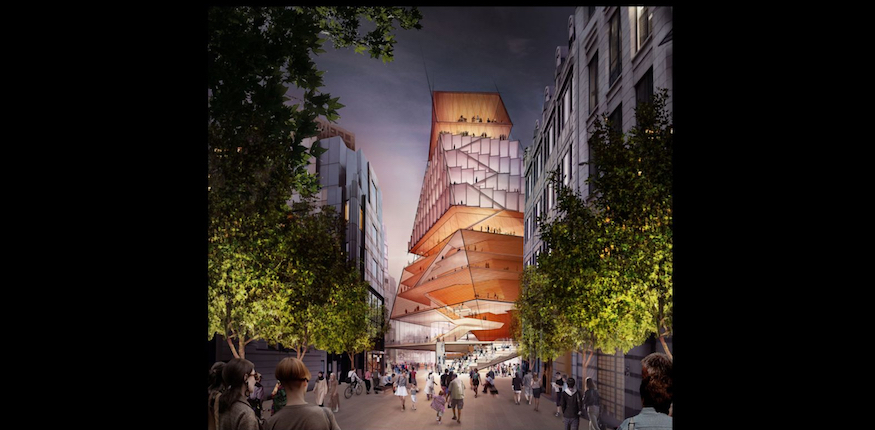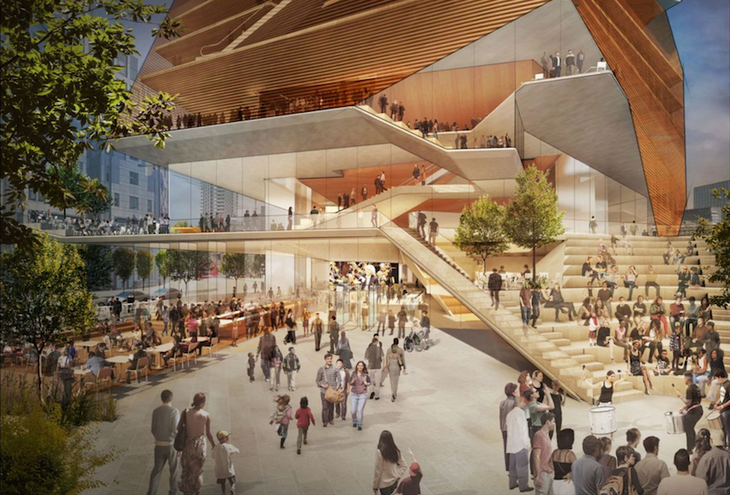
This grand, twisting beaut of a building could replace the Museum of London's current home.
The Centre for Music would be built on the site at London Wall, midway between St Paul's and the Barbican Centre.
The new venue would bring together the talents of the Barbican centre, London Symphony Orchestra and Guildhall School of Music & Drama, with the support of the City of London. The vision is to create a world-class concert 'equipped for the digital age'.

The museum has well-advanced plans to decamp to Smithfield, leaving this prime location unoccupied. In its place, a 'world-class venue for performance and education across all musical genres' could rise. These are the first concept images of the £288 million building.
Twisting ziggurat
The twisting ziggurat design, by architects Diller Scofidio + Renfro, immediately recalls the extension to Tate Modern. This is perhaps intentional. Both institutions would stand on an emerging north-south axis of artistic excellence, marketed as the Culture Mile.
The centrepiece is a 2,000-seat concert hall like nothing else in London. The concept design shows an in-the-round layout, with seating arranged in pockets at different levels.

It looks mightily impressive — though you might want to pencil in some handrails, safety barriers and emergency exit signs to get a more honest impression of what it could look like.
The building will also include classrooms, rehearsal space, restaurants and bars. The apex space is called 'The Coda', an 'intimate' room for events and performances with views of St Paul's.

Our verdict
We like it. The open, welcoming entrance levels could not contrast more with the notoriously baffling Barbican Centre. It's a cultural landmark that twists into the sky with confidence, yet keeps within the heights set by neighbouring office buildings to the east and west. The soft, wooden interior is also very pleasing, notwithstanding the caveat about the missing fittings we mentioned above. Best of all, the marketers don't use the word 'iconic' until the eighth paragraph, which shows admirable constraint.

One objection, sure to be raised, will be further erosion of the original Barbican estate. The brutalist buildings have been nibbled away at various locations over the past decade. The recently completed London Wall Place, a little to the east, swallowed up extensive sections of high-walk, and other structures. They've found attractive replacements, but this continued chipping away might eventually detract from the Barbican's uniquely bewildering character.
That said, very few details have been released about the new centre, and it's too early to cry 'good thing' or 'bad thing' from the images alone. A fairer assessment can be given in due course, once we learn more about the building's funding, form and function.
When will it appear?
Not for a while. The scheme has yet to receive planning permission and funding, and the Museum of London is unlikely to vacate its current home until at least 2023. We could be looking at something like 2030 by the time this new landmark for London is ready to welcome its first guests.




